Langley Escallonia Escallonia 'Langleyensis'

ABOUT
Escallonia 'Langleyensis' is a flowering shrub that is widely appreciated for its decorative appeal. It has a dense and bushy appearance, with small, glossy green leaves that provide a lush backdrop for a profusion of flowers. The leaves are typically oval-shaped with a slightly serrated edge, giving them a fine texture. During the blooming season, the plant is adorned with attractive clusters of flowers that are typically pink, adding a vibrant pop of color to the greenery. These flowers have a tubular shape, which opens up into five small petals, and they are often visited by pollinators like bees and butterflies. The combination of its dense foliage and striking blossoms makes Escallonia 'Langleyensis' a popular choice for gardeners looking to add visual interest to their landscapes.
About this plant
 Names
NamesSynonyms
Langleyensis Escallonia, Langley’s Escallonia
Common names
Escallonia 'Langleyensis'.
 Toxicity
ToxicityTo humans
Escallonia 'Langleyensis', commonly known as Escallonia, does not have a well-documented profile of toxicity to humans. There is little evidence to suggest that this plant is highly toxic if ingested. However, as with many plants, it is always possible for individuals to experience a varying degree of sensitivity or allergic reaction, resulting in symptoms such as gastrointestinal upset, skin irritation, or other allergic reactions. But specific symptoms of poisoning from Escallonia in humans are not widely reported or well-known. As a general precaution, it is advisable not to ingest any part of garden plants not known to be edible.
To pets
For Escallonia, which is the common name for Escallonia 'Langleyensis', there is limited information available on its toxicity to pets, such as dogs and cats. It is not commonly listed as a toxic plant to pets. While this suggests that it might not be highly poisonous, a lack of evidence does not guarantee that a plant is safe. Ingestion of non-food plants can sometimes lead to gastrointestinal discomfort, vomiting, or diarrhea in pets. If you have concerns about your pet's health after ingesting this plant, or if they display any unusual symptoms, it is important to consult with a veterinarian.
 Characteristics
CharacteristicsLife cycle
Perennials
Foliage type
Evergreen
Color of leaves
Green
Flower color
Pink
Height
6-8 feet (1.8-2.4 meters)
Spread
4-6 feet (1.2-1.8 meters)
Plant type
Shrub
Hardiness zones
7
Native area
South America
Benefits
 General Benefits
General Benefits- Ornamental value: The Escallonia 'Langleyensis', commonly known as just Escallonia, is appreciated for its lush, evergreen foliage which provides year-round visual interest.
- Attracts pollinators: Escallonia flowers attract beneficial insects such as bees and butterflies, supporting local ecosystems.
- Drought tolerance: Once established, Escallonia is comparatively drought-resistant, requiring less water than many other garden plants.
- Wind resistance: The plant is sturdy and can tolerate windy conditions, making it suitable for coastal gardens or exposed locations.
- Rapid growth: Escallonia has a relatively fast growth rate, which can quickly provide coverage or fill in garden spaces.
- Easy to shape: The plant responds well to pruning, which means it can be easily shaped and maintained as hedges or borders.
- Variety of uses: Escallonia is versatile and can be used in various landscape designs, including as a specimen plant, in mixed borders, or for creating privacy screens.
- Low maintenance: The plant generally requires minimal care once established, making it ideal for gardeners of all skill levels.
- Tolerance of different soils: Escallonia can grow in a wide range of soil types, though it prefers well-drained soil.
 Medical Properties
Medical PropertiesThis plant is not used for medical purposes.
 Air-purifying Qualities
Air-purifying QualitiesThis plant is not specifically known for air purifying qualities.
 Other Uses
Other Uses- Creating natural art: Trimmed branches and foliage of Escallonia can be used in flower arrangements or to create wreath bases, offering an organic and rustic aesthetic.
- Beekeeping support: Planting Escallonia near beehives can serve as an attractive source of nectar for bees, aiding in the health of the hive and honey production.
- Windbreaks and shelterbelts: Due to their thick and bushy nature, these plants can be placed strategically to reduce wind speed and protect more vulnerable areas of the garden or crops.
- Noise reduction: A dense hedge of Escallonia can help to dampen and absorb sound, making it useful for creating a more peaceful environment in urban gardens.
- Erosion control: Escallonia's root system can help to stabilize slopes and prevent soil erosion in areas prone to heavy rains or winds.
- Landscape sculpting: Gardeners can train and prune Escallonia to create topiary sculptures or living fences that add a decorative touch to the landscape.
- Habitat creation: The dense foliage can provide nesting sites for birds and shelter for other small wildlife, enhancing biodiversity in a garden setting.
- Green mulch: Pruned leaves and stems can be used as organic green mulch, providing nutrients to the soil as they decompose while also suppressing weeds.
- Educational tool: Escallonia can be used in educational gardens to teach pruning techniques and plant care, demonstrating the variety of ways shrubs can be managed and maintained.
- Seasonal interest: With its attractive foliage and flowers, Escallonia can be a valuable addition to gardens designed for visual appeal year-round, contributing to winter interest especially with evergreen varieties.
Interesting Facts
 Feng Shui
Feng ShuiThe Escallonia is not used in Feng Shui practice.
 Zodiac Sign Compitability
Zodiac Sign CompitabilityThe Escallonia is not used in astrology practice.
 Plant Symbolism
Plant Symbolism- Adaptability - Escallonia 'Langleyensis', commonly known as just Escallonia, with its various varieties, symbolizes adaptability due to its ability to thrive in different environmental conditions.
- Resilience - The Escallonia plant represents resilience, showcasing its capacity to recover from adverse conditions, such as coastal winds and salt sprays, and still flourish.
- Protection - Often planted as hedges, Escallonia serves as a living barrier, symbolizing protection against external forces both in a physical and metaphorical sense.
- Beauty and Aesthetics - With its attractive foliage and flowers, Escallonia symbolizes the appreciation of beauty and the effort to maintain aesthetic appeal in gardens and landscapes.
 Water
WaterThe Escallonia, commonly known as the Escallonia 'Langleyensis', should be watered moderately to maintain evenly moist soil during its active growth in spring and summer. Decrease watering in the fall and winter to prevent waterlogging. Generally, it's enough to provide about 1 to 1.5 gallons of water every week under normal conditions, but this should be adjusted based on weather (more during hot, dry spells and less during cool, wet periods). Ensure that the water deeply penetrates the soil to encourage a strong root system. Always check the top inch of soil for dryness before watering again to avoid overwatering.
 Light
LightEscallonias prefer a location that receives full sun to partial shade. The ideal spot for the Escallonia 'Langleyensis' is one where it can enjoy at least 4 to 6 hours of direct sunlight daily, which promotes vigorous growth and abundant flowering. Though tolerant of a little shade, too much can result in fewer blooms and a leggy growth habit.
 Temperature
TemperatureThe Escallonia 'Langleyensis' can tolerate a wide range of temperatures, ideally thriving in conditions between 60°F and 75°F. They are relatively hardy plants that can withstand temperatures down to at least 10°F. Offering some wind protection can help mitigate damage from cold snaps. Avoid placing the plant in areas where winter temperatures frequently fall below these minimums without adequate protection.
 Pruning
PruningPrune the Escallonia 'Langleyensis' to shape the plant, remove any dead or damaged branches, and promote bushier growth. The best time for pruning is in the late winter or early spring before new growth begins. Alternatively, light pruning can be done after the plant has flowered to maintain its shape. Pruning is typically done once a year or after significant blooming cycles.
 Cleaning
CleaningAs needed
 Soil
SoilEscallonia, commonly known as Langley's Escallonia, thrives in a well-draining soil mix with a slightly acidic to neutral pH of 6.0 to 7.0. The ideal mix can be made by combining garden soil, peat, and perlite or sand. Ensure good fertility by incorporating well-rotted compost or a balanced slow-release fertilizer.
 Repotting
RepottingLangley's Escallonia does not require frequent repotting; it should be repotted every 2 to 3 years. This ensures the plant has enough room for root growth and replenishes the nutrients in the soil.
 Humidity & Misting
Humidity & MistingLangley's Escallonia prefers moderate to high humidity levels, but it is quite adaptable and can tolerate a range of conditions, so long as it is not in extremely arid environments.
 Suitable locations
Suitable locationsIndoor
Ensure bright light, avoid dry air, and keep in cooler spot.
Outdoor
Full sun to part shade, shelter from harsh winds.
Hardiness zone
7-10 USDA
 Life cycle
Life cycleEscallonia 'Langleyensis', commonly known as Escallonia, begins its life cycle with seed germination, where the seedling emerges and starts to develop primary leaves. After establishing a root system, it enters a phase of vegetative growth, producing dense foliage and maturing into a shrub. During the flowering stage, it produces clusters of small pink flowers, usually in the summer, which are attractive to pollinators. Once pollinated, the flowers develop into fruit that contains seeds, thus completing the reproductive cycle. As a perennial, Escallonia 'Langleyensis' will go through multiple flowering cycles, with proper pruning encouraging bushier growth and more abundant blooms. Over time, the plant will gradually reach the end of its lifespan, which can be extended through proper care and asexual propagation methods such as cuttings.
 Propogation
PropogationPropogation time
Spring-Early Summer
Propogation: Escallonia 'Langleyensis', commonly known as Escallonia, is typically propagated through semi-hardwood cuttings. The best time to take these cuttings is during the late summer months. The process involves selecting a healthy branch of the current year's growth and cutting a length of about 4 to 6 inches (approximately 10 to 15 centimeters). The lower leaves of the cutting are removed, leaving a few at the top, and the cut end is often dipped in rooting hormone to encourage root development. The cutting is then planted in a pot filled with a well-drained potting mix, which should be kept moist but not overly wet. To maintain a humid environment, the cutting can be covered with a plastic bag or placed in a propagator. With adequate warmth and humidity, roots should begin to form within a few weeks.

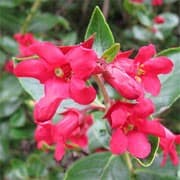
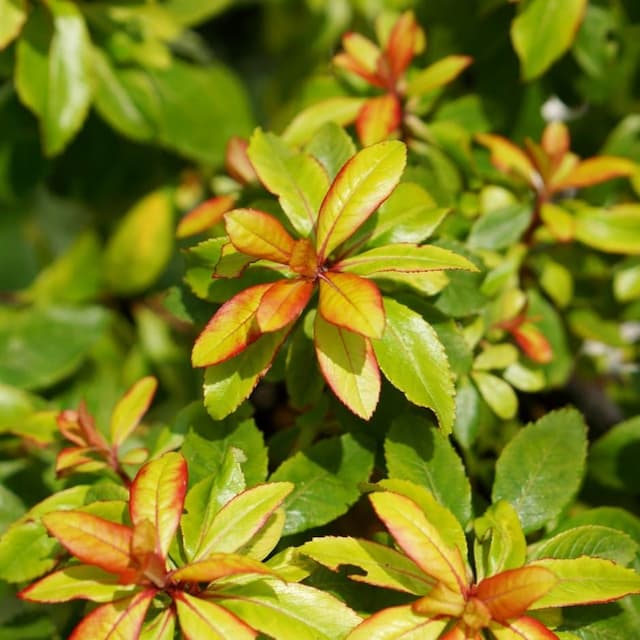
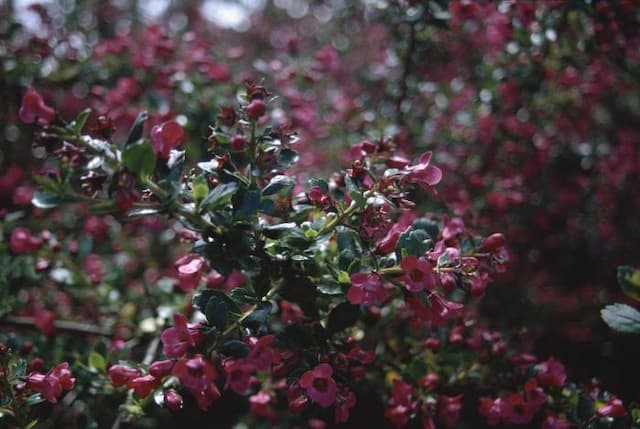
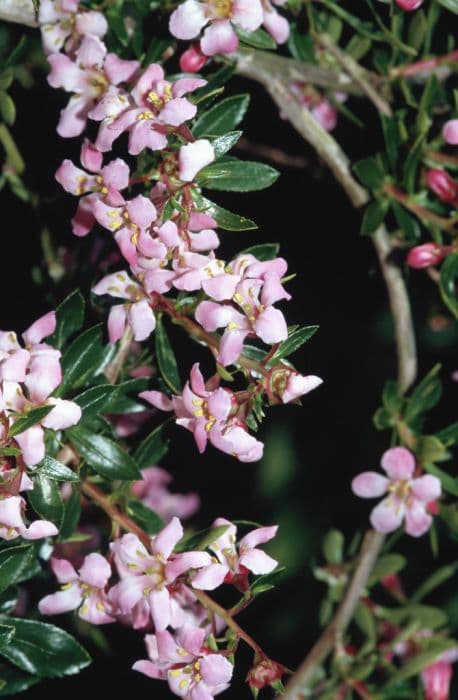
![Escallonia [Golden Carpet]](/_next/image?url=https%3A%2F%2Fplants-admin.emdemapps.com%2Fimages%2Fplants%2F%2Fimages%2F604b59284be41.png&w=640&q=75)
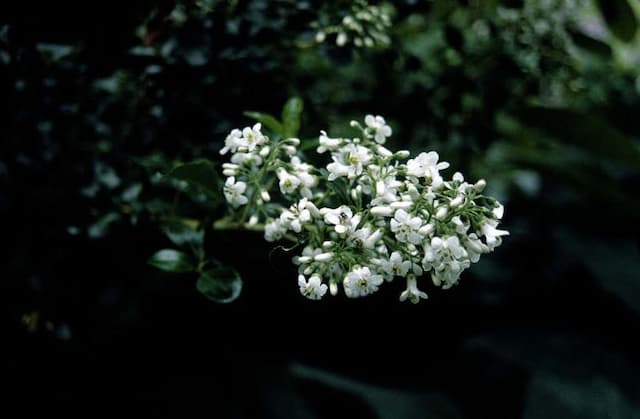
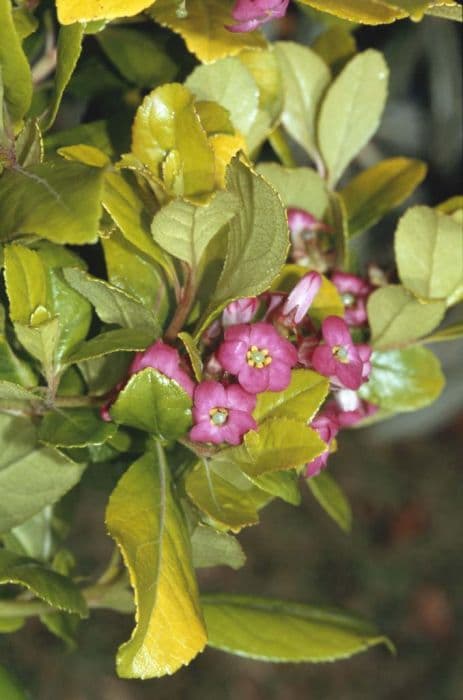
![Escallonia [Pink Elle]](/_next/image?url=https%3A%2F%2Fplants-admin.emdemapps.com%2Fimages%2Fplants%2F%2Fimages%2F604b630962bc2.png&w=640&q=75)
